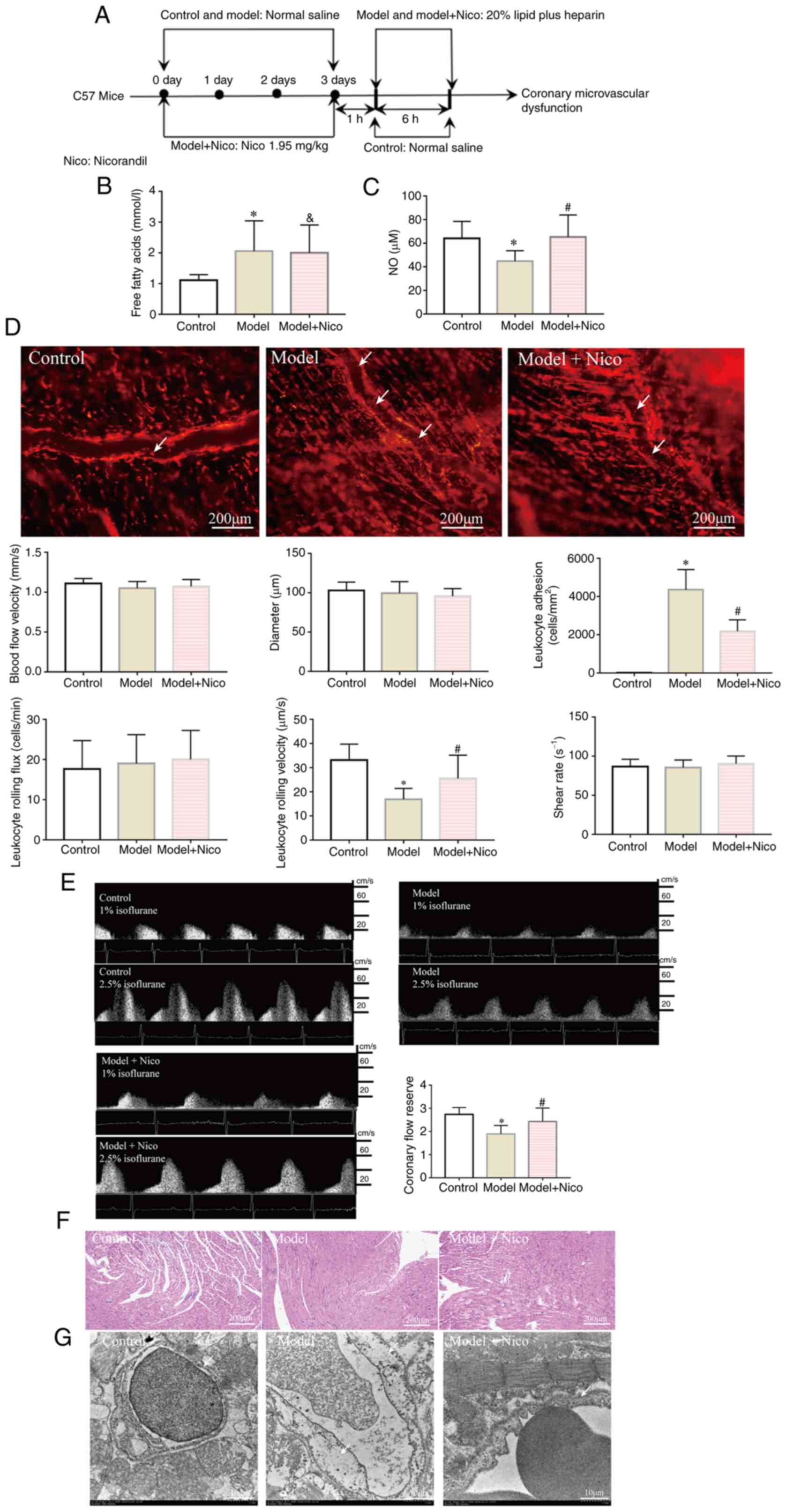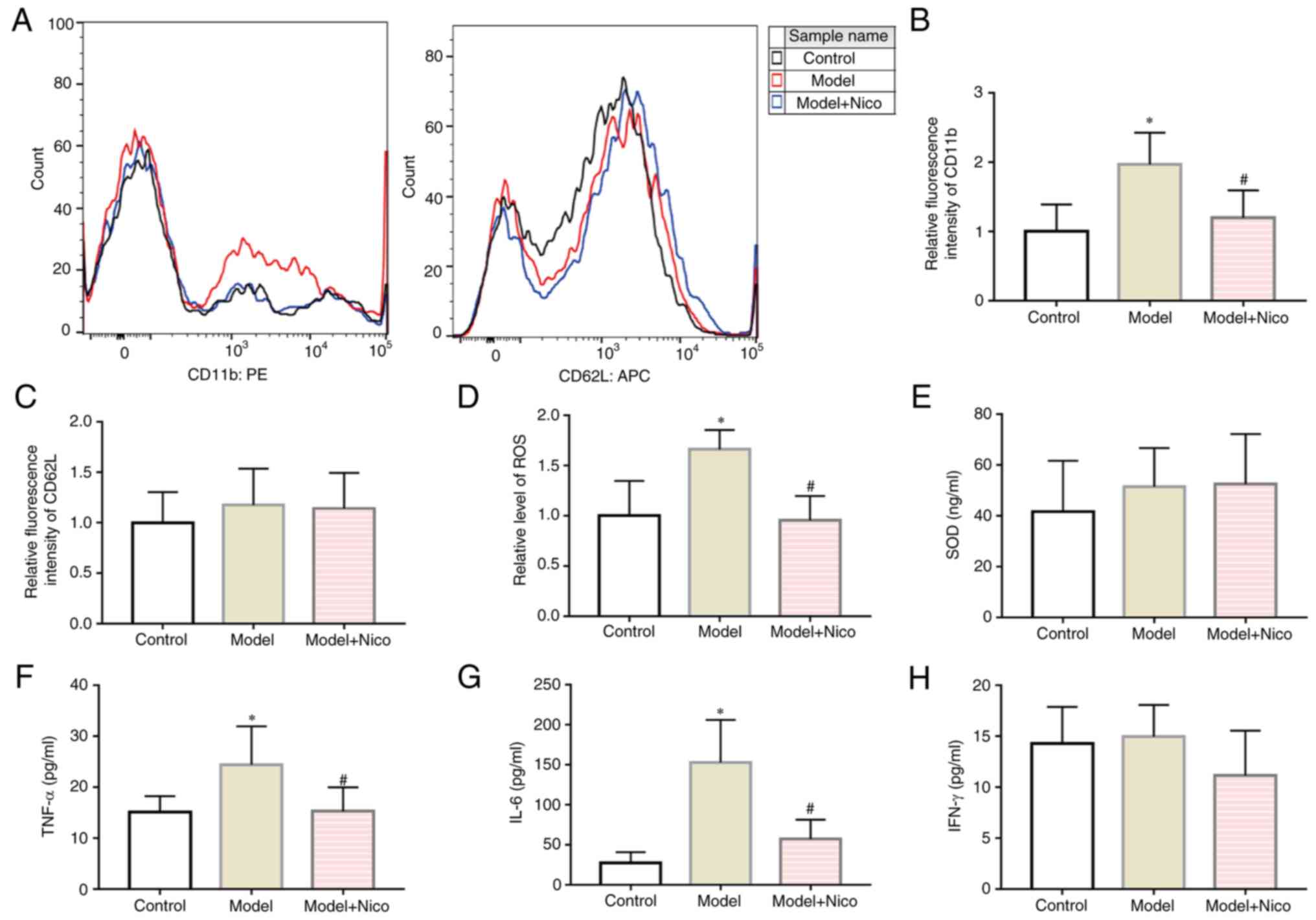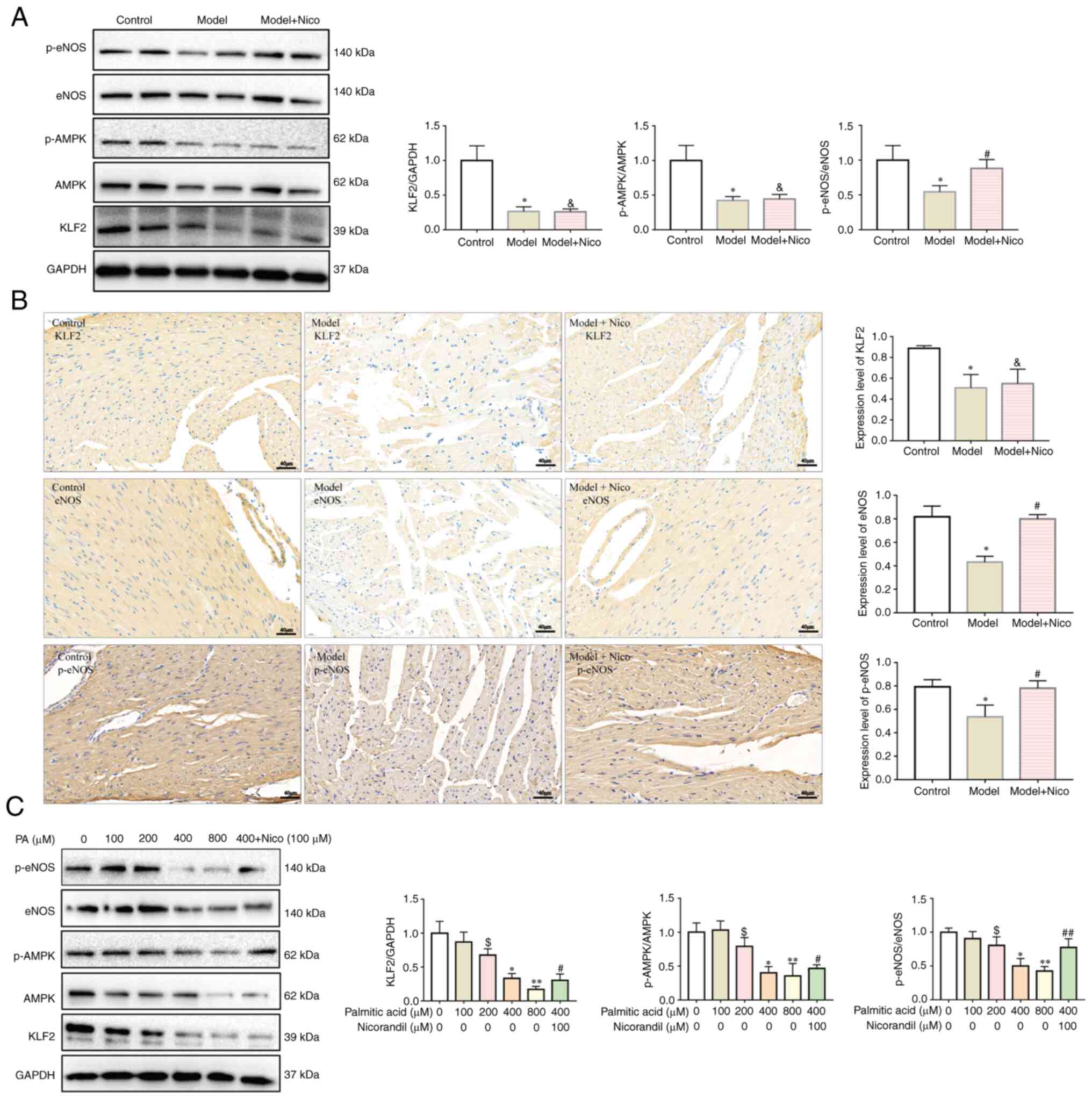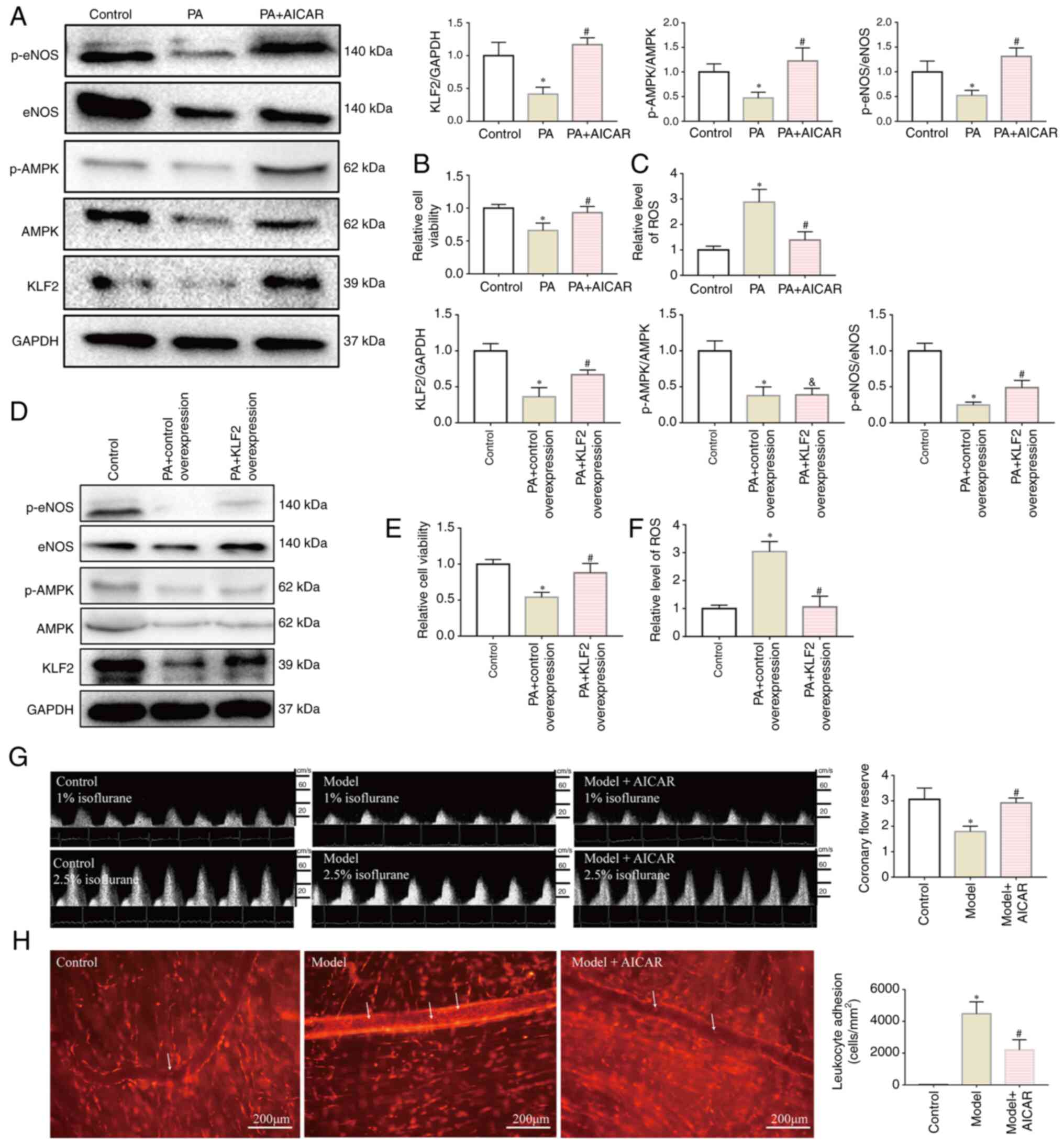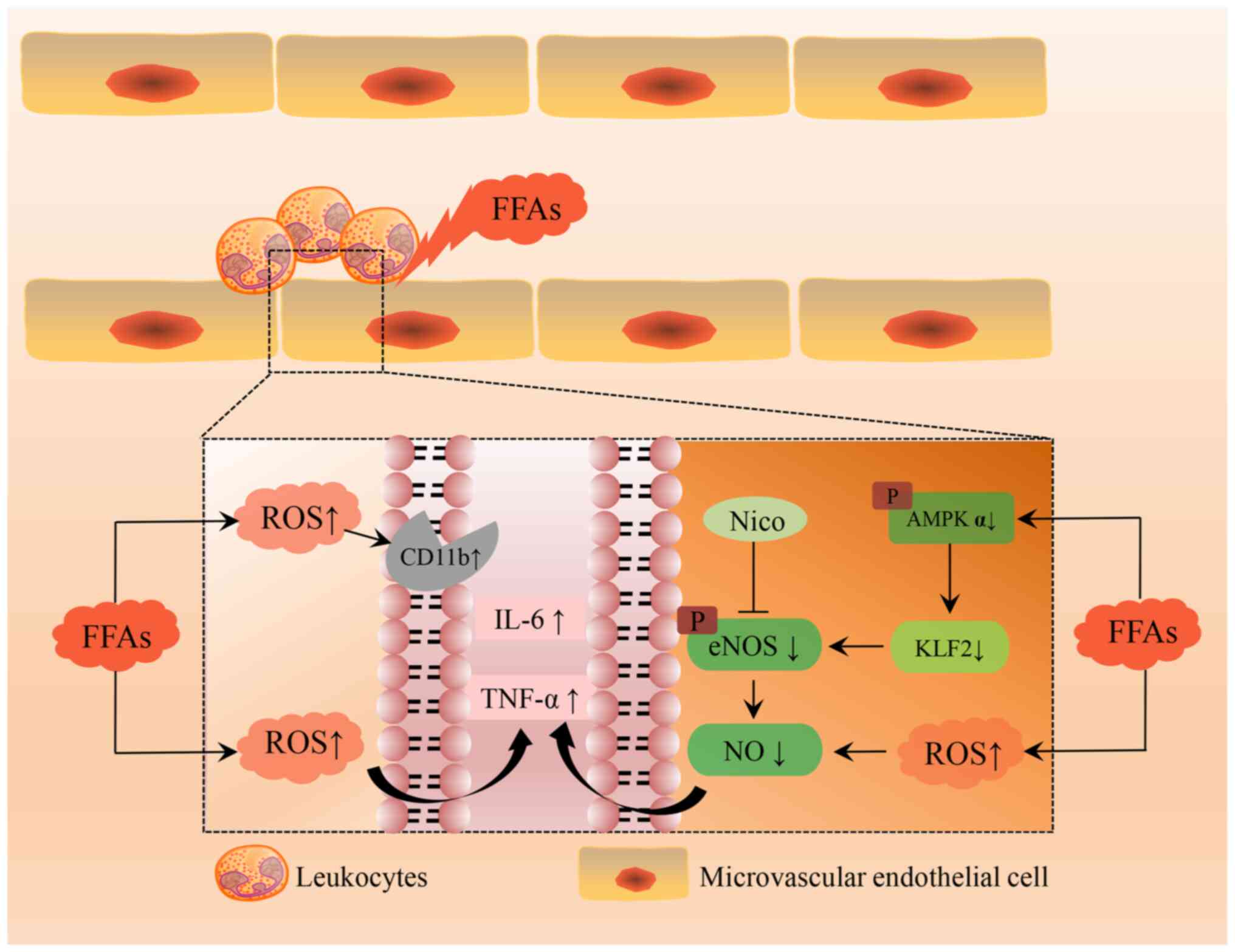|
1
|
GBD 2015 Mortality and Causes of Death
Collaborators: Global, regional, and national life expectancy,
all-cause mortality, and cause-specific mortality for 249 causes of
death, 1980-2015: A systematic analysis for the global burden of
disease study 2015. Lancet. 388:1459–1544. 2016. View Article : Google Scholar : PubMed/NCBI
|
|
2
|
Vancheri F, Longo G, Vancheri S and Henein
M: Coronary microvascular dysfunction. J Clin Med. 9:28802020.
View Article : Google Scholar : PubMed/NCBI
|
|
3
|
Murthy VL, Naya M, Taqueti VR, Foster CR,
Gaber M, Hainer J, Dorbala S, Blankstein R, Rimoldi O, Camici PG
and Di Carli MF: Effects of sex on coronary microvascular
dysfunction and cardiac outcomes. Circulation. 129:2518–2527. 2014.
View Article : Google Scholar : PubMed/NCBI
|
|
4
|
Del BM, Montone RA, Camilli M, Carbone S,
Narula J, Lavie CJ, Niccoli G and Crea F: Coronary microvascular
dysfunction across the spectrum of cardiovascular diseases: JACC
state-of-the-art review. J Am Coll Cardiol. 78:1352–1371. 2021.
View Article : Google Scholar
|
|
5
|
Thakker RA, Rodriguez Lozano J, Rodriguez
Lozano P, Motiwala A, Rangasetty U, Khalife W and Chatila K:
Coronary microvascular disease. Cardiol Ther. 11:23–31. 2022.
View Article : Google Scholar : PubMed/NCBI
|
|
6
|
Niu Z, Hu H and Tang F: High free fatty
acid levels are associated with stroke recurrence and poor
functional outcome in Chinese patients with ischemic stroke. J Nutr
Health Aging. 21:1102–1106. 2017. View Article : Google Scholar : PubMed/NCBI
|
|
7
|
Jung Y, Cho Y, Kim N, Oh IY, Kang SW, Choi
EK and Hwang GS: Lipidomic profiling reveals free fatty acid
alterations in plasma from patients with atrial fibrillation. PLoS
One. 13:e1967092018. View Article : Google Scholar
|
|
8
|
Skidmore PML, Woodside JV, Mc Master C,
Bingham A, Mercer C, Evans A, Young IS and Yarnell JW: Plasma free
fatty acid patterns and their relationship with CVD risk in a male
middle-aged population. Eur J Clin Nutr. 64:239–244. 2010.
View Article : Google Scholar : PubMed/NCBI
|
|
9
|
Khawaja O, Maziarz M, Biggs ML, Longstreth
WT Jr, Ix JH, Kizer JR, Zieman S, Tracy RP, Mozaffarian D, Mukamal
KJ, et al: Plasma free fatty acids and risk of stroke in the
cardiovascular health study. Int J Stroke. 9:917–920. 2014.
View Article : Google Scholar : PubMed/NCBI
|
|
10
|
Pilz S and März W: Free fatty acids as a
cardiovascular risk factor. Clin Chem Lab Med. 46:429–434. 2008.
View Article : Google Scholar : PubMed/NCBI
|
|
11
|
Hu T, Zhang W, Han F, Zhao R, Liu L and An
Z: Plasma fingerprint of free fatty acids and their correlations
with the traditional cardiac biomarkers in patients with type 2
diabetes complicated by coronary heart disease. Front Cardiovasc
Med. 9:9034122022. View Article : Google Scholar : PubMed/NCBI
|
|
12
|
Lopaschuk GD, Ussher JR, Folmes CD, Jaswal
JS and Stanley WC: Myocardial fatty acid metabolism in health and
disease. Physiol Rev. 90:207–258. 2010. View Article : Google Scholar : PubMed/NCBI
|
|
13
|
Fillmore N, Mori J and Lopaschuk GD:
Mitochondrial fatty acid oxidation alterations in heart failure,
ischaemic heart disease and diabetic cardiomyopathy. Br J
Pharmacol. 171:2080–2090. 2014. View Article : Google Scholar :
|
|
14
|
Goldberg IJ, Trent CM and Schulze PC:
Lipid metabolism and toxicity in the heart. Cell Metab. 15:805–812.
2012. View Article : Google Scholar : PubMed/NCBI
|
|
15
|
Wende AR and Abel ED: Lipotoxicity in the
heart. Biochim Biophys Acta. 1801:311–319. 2010. View Article : Google Scholar :
|
|
16
|
Zhang Y, Zhao J, Ding R, Niu W, He Z and
Liang C: Pre-treatment with compound Danshen dripping pills
prevents lipid infusion-induced microvascular dysfunction in mice.
Pharm Biol. 58:701–706. 2020. View Article : Google Scholar : PubMed/NCBI
|
|
17
|
Niu Y, Li S, Na L, Feng R, Liu L, Li Y and
Sun C: Mangiferin decreases plasma free fatty acids through
promoting its catabolism in liver by activation of AMPK. PLoS One.
7:e307822012. View Article : Google Scholar : PubMed/NCBI
|
|
18
|
Qi D and Young LH: AMPK: Energy sensor and
survival mechanism in the ischemic heart. Trends Endocrinol Metab.
26:422–429. 2015. View Article : Google Scholar : PubMed/NCBI
|
|
19
|
Baltgalvis KA, White K, Li W, Claypool MD,
Lang W, Alcantara R, Singh BK, Friera AM, McLaughlin J, Hansen D,
et al: Exercise performance and peripheral vascular insufficiency
improve with AMPK activation in high-fat diet-fed mice. Am J
Physiol Heart Circ Physiol. 306:H1128–H1145. 2014. View Article : Google Scholar : PubMed/NCBI
|
|
20
|
Atkins GB and Jain MK: Role of
Krüppel-like transcription factors in endothelial biology. Circ
Res. 100:1686–1695. 2007. View Article : Google Scholar : PubMed/NCBI
|
|
21
|
Chatauret N, Coudroy R, Delpech PO,
Vandebrouck C, Hosni S, Scepi M and Hauet T: Mechanistic analysis
of nonoxygenated hypothermic machine perfusion's protection on warm
ischemic kidney uncovers greater eNOS phosphorylation and
vasodilation. Am J Transplant. 14:2500–2514. 2014. View Article : Google Scholar : PubMed/NCBI
|
|
22
|
Hong FF, Liang XY, Liu W, Lv S, He SJ,
Kuang HB and Yang SL: Roles of eNOS in atherosclerosis treatment.
Inflamm Res. 68:429–441. 2019. View Article : Google Scholar : PubMed/NCBI
|
|
23
|
Yan J, Wang A, Cao J and Chen L:
Apelin/APJ system: An emerging therapeutic target for respiratory
diseases. Cell Mol Life Sci. 77:2919–2930. 2020. View Article : Google Scholar : PubMed/NCBI
|
|
24
|
Lee GH, Park JS, Jin SW, Pham TH, Thai TN,
Kim JY, Kim CY, Choi JH, Han EH and Jeong HG: Betulinic acid
induces eNOS expression via the AMPK-dependent KLF2 signaling
pathway. J Agric Food Chem. 68:14523–14530. 2020. View Article : Google Scholar : PubMed/NCBI
|
|
25
|
Chen GH, Li XL, Deng YQ, Zhou FM, Zou WQ,
Jiang WX, Shangguan SQ and Lu ZN: The molecular mechanism of EPO
regulates the angiogenesis after cerebral ischemia through
AMPK-KLF2 signaling pathway. Crit Rev Eukaryot Gene Expr.
29:105–112. 2019. View Article : Google Scholar : PubMed/NCBI
|
|
26
|
Segers VFM, Brutsaert DL and De Keulenaer
GW: Cardiac remodeling: endothelial cells have more to say than
just NO. Front Physiol. 9:3822018. View Article : Google Scholar : PubMed/NCBI
|
|
27
|
Jiang P, Ren L, Zhi L, Yu Z, Lv F, Xu F,
Peng W, Bai X, Cheng K, Quan L, et al: Negative regulation of AMPK
signaling by high glucose via E3 ubiquitin ligase MG53. Mol Cell.
81:629–637.e5. 2021. View Article : Google Scholar : PubMed/NCBI
|
|
28
|
Percie du Sert N, Hurst V, Ahluwalia A,
Alam S, Avey MT, Baker M, Browne WJ, Clark A, Cuthill IC, Dirnagl
U, et al: The ARRIVE guidelines 2.0: Updated guidelines for
reporting animal research. Br J Pharmacol. 177:3617–3624. 2020.
View Article : Google Scholar : PubMed/NCBI
|
|
29
|
Zhan B, Xu Z, Zhang Y, Wan K, Deng H, Wang
D, Bao H, Wu Q, Hu X, Wang H, et al: Nicorandil reversed
homocysteine-induced coronary microvascular dysfunction via
regulating PI3K/Akt/eNOS pathway. Biomed Pharmacother.
127:1101212020. View Article : Google Scholar : PubMed/NCBI
|
|
30
|
Chang WT, Fisch S, Chen M, Qiu Y, Cheng S
and Liao R: Ultrasound based assessment of coronary artery flow and
coronary flow reserve using the pressure overload model in mice. J
Vis Exp. e525982015.PubMed/NCBI
|
|
31
|
Wang Y, Du F, Hawez A, Mörgelin M and
Thorlacius H: Neutrophil extracellular trap-microparticle complexes
trigger neutrophil recruitment via high-mobility group protein 1
(HMGB1)-toll-like receptors (TLR2)/TLR4 signalling. Br J Pharmacol.
176:3350–3363. 2019.PubMed/NCBI
|
|
32
|
House SD and Lipowsky HH:
Leukocyte-endothelium adhesion: Microhemodynamics in mesentery of
the cat. Microvasc Res. 34:363–379. 1987. View Article : Google Scholar : PubMed/NCBI
|
|
33
|
McDonald CA, Payne NL, Sun G, Moussa L,
Siatskas C, Lim R, Wallace EM, Jenkin G and Bernard CC:
Immunosuppressive potential of human amnion epithelial cells in the
treatment of experimental autoimmune encephalomyelitis. J
Neuroinflammation. 12:1122015. View Article : Google Scholar : PubMed/NCBI
|
|
34
|
Johnson EK, Schelling ME, Quitadamo IJ,
Andrew S and Johnson EC: Cultivation and characterization of
coronary microvascular endothelial cells: A novel porcine model
using micropigs. Microvasc Res. 64:278–288. 2002. View Article : Google Scholar : PubMed/NCBI
|
|
35
|
Wang C, He H, Liu G, Ma H, Li L, Jiang M,
Lu Q, Li P and Qi H: DT-13 induced apoptosis and promoted
differentiation of acute myeloid leukemia cells by activating
AMPK-KLF2 pathway. Pharmacol Res. 158:1048642020. View Article : Google Scholar : PubMed/NCBI
|
|
36
|
Roy VK, Kumar A, Joshi P, Arora J and
Ahanger AM: Plasma free fatty acid concentrations as a marker for
acute myocardial infarction. J Clin Diagn Res. 7:2432–2434.
2013.
|
|
37
|
Hendrickson SC, St Louis JD, Lowe JE and
Abdel-aleem S: Free fatty acid metabolism during myocardial
ischemia and reperfusion. Mol Cell Biochem. 166:85–94. 1997.
View Article : Google Scholar : PubMed/NCBI
|
|
38
|
Manzella D, Barbieri M, Rizzo MR, Ragno E,
Passariello N, Gambardella A, Marfella R, Giugliano D and Paolisso
G: Role of free fatty acids on cardiac autonomic nervous system in
noninsulin-dependent diabetic patients: Effects of metabolic
control. J Clin Endocrinol Metab. 86:2769–2774. 2001. View Article : Google Scholar : PubMed/NCBI
|
|
39
|
Knuuti MJ, Mäki M, Yki-Järvinen H,
Voipio-Pulkki LM, Härkönen R, Haaparanta M and Nuutila P: The
effect of insulin and FFA on myocardial glucose uptake. J Mol Cell
Cardiol. 27:1359–1367. 1995. View Article : Google Scholar : PubMed/NCBI
|
|
40
|
Lopaschuk GD: Metabolic modulators in
heart disease: Past, present, and future. Can J Cardiol.
33:838–849. 2017. View Article : Google Scholar : PubMed/NCBI
|
|
41
|
I S Sobczak A, A Blindauer C and J Stewart
A: Changes in plasma free fatty acids associated with type-2
diabetes. Nutrients. 11:20222019. View Article : Google Scholar : PubMed/NCBI
|
|
42
|
Ko HJ, Zhang Z, Jung DY, Jun JY, Ma Z,
Jones KE, Chan SY and Kim JK: Nutrient stress activates
inflammation and reduces glucose metabolism by suppressing
AMP-activated protein kinase in the heart. Diabetes. 58:2536–2546.
2009. View Article : Google Scholar : PubMed/NCBI
|
|
43
|
Han L, Liu J, Zhu L, Tan F, Qin Y, Huang H
and Yu Y: Free fatty acid can induce cardiac dysfunction and alter
insulin signaling pathways in the heart. Lipids Health Dis.
17:1852018. View Article : Google Scholar : PubMed/NCBI
|
|
44
|
Chai W, Liu J, Jahn LA, Fowler DE, Barrett
EJ and Liu Z: Salsalate attenuates free fatty acid-induced
microvascular and metabolic insulin resistance in humans. Diabetes
Care. 34:1634–1638. 2011. View Article : Google Scholar : PubMed/NCBI
|
|
45
|
Tripathy D, Mohanty P, Dhindsa S, Syed T,
Ghanim H, Aljada A and Dandona P: Elevation of free fatty acids
induces inflammation and impairs vascular reactivity in healthy
subjects. Diabetes. 52:2882–2887. 2003. View Article : Google Scholar : PubMed/NCBI
|
|
46
|
Turpin SM, Ryall JG, Southgate R, Darby I,
Hevener AL, Febbraio MA, Kemp BE, Lynch GS and Watt MJ: Examination
of 'lipotoxicity' in skeletal muscle of high-fat fed and ob/ob
mice. J Physiol. 587:1593–1605. 2009. View Article : Google Scholar : PubMed/NCBI
|
|
47
|
Boden G, She P, Mozzoli M, Cheung P,
Gumireddy K, Reddy P, Xiang X, Luo Z and Ruderman N: Free fatty
acids produce insulin resistance and activate the proinflammatory
nuclear factor-kappaB pathway in rat liver. Diabetes. 54:3458–3465.
2005. View Article : Google Scholar : PubMed/NCBI
|
|
48
|
Yasu T, Mutoh A, Wada H, Kobayashi M,
Kikuchi Y, Momomura S and Ueda S: Renin-angiotensin system
inhibitors can prevent intravenous lipid infusion-induced
myocardial microvascular dysfunction and leukocyte activation. Circ
J. 82:494–501. 2018. View Article : Google Scholar
|
|
49
|
Umpierrez GE, Smiley D, Robalino G, Peng
L, Kitabchi AE, Khan B, Le A, Quyyumi A, Brown V and Phillips LS:
Intravenous intralipid-induced blood pressure elevation and
endothelial dysfunction in obese African-Americans with type 2
diabetes. J Clin Endocrinol Metab. 94:609–614. 2009. View Article : Google Scholar :
|
|
50
|
Wang H, Li H, Hou Z, Pan L, Shen X and Li
G: Role of oxidative stress in elevated blood pressure induced by
high free fatty acids. Hypertens Res. 32:152–158. 2009. View Article : Google Scholar : PubMed/NCBI
|
|
51
|
Guerra BA and Otton R: Impact of the
carotenoid astaxanthin on phagocytic capacity and ROS/RNS
production of human neutrophils treated with free fatty acids and
high glucose. Int Immunopharmacol. 11:2220–2226. 2011. View Article : Google Scholar : PubMed/NCBI
|
|
52
|
Mah E, Noh SK, Ballard KD, Matos ME, Volek
JS and Bruno RS: Postprandial hyperglycemia impairs vascular
endothelial function in healthy men by inducing lipid peroxidation
and increasing asymmetric dimethylarginine:arginine. J Nutr.
141:1961–1968. 2011. View Article : Google Scholar : PubMed/NCBI
|
|
53
|
Dong G, Song L, Tian C, Wang Y, Miao F,
Zheng J, Lu C, Alsadun S and Graves DT: FOXO1 regulates
bacteria-induced neutrophil activity. Front Immunol. 8:10882017.
View Article : Google Scholar : PubMed/NCBI
|
|
54
|
Gomes NE, Brunialti MK, Mendes ME,
Freudenberg M, Galanos C and Salomão R: Lipopolysaccharide-induced
expression of cell surface receptors and cell activation of
neutrophils and monocytes in whole human blood. Braz J Med Biol
Res. 43:853–858. 2010. View Article : Google Scholar : PubMed/NCBI
|
|
55
|
Zhang H, Wang Y, Qu M, Li W, Wu D, Cata JP
and Miao C: Neutrophil, neutrophil extracellular traps and
endothelial cell dysfunction in sepsis. Clin Transl Med.
13:e11702023. View Article : Google Scholar : PubMed/NCBI
|
|
56
|
Ridker PM, Libby P, MacFadyen JG, Thuren
T, Ballantyne C, Fonseca F, Koenig W, Shimokawa H, Everett BM and
Glynn RJ: Modulation of the interleukin-6 signalling pathway and
incidence rates of atherosclerotic events and all-cause mortality:
Analyses from the canakinumab anti-inflammatory thrombosis outcomes
study (CANTOS). Eur Heart J. 39:3499–3507. 2018. View Article : Google Scholar : PubMed/NCBI
|
|
57
|
Jiang T, Zhang W and Wang Z: Laquinimod
protects Against TNF-α-induced attachment of monocytes to human
aortic endothelial cells (HAECs) by increasing the expression of
KLF2. Drug Des Devel Ther. 14:1683–1691. 2020. View Article : Google Scholar :
|
|
58
|
Wang Y, Zhang J, Wang Z, Wang C and Ma D:
Endothelial-cell-mediated mechanism of coronary microvascular
dysfunction leading to heart failure with preserved ejection
fraction. Heart Fail Rev. 28:169–178. 2023. View Article : Google Scholar :
|
|
59
|
Hardie DG and Carling D: The AMP-activated
protein kinase-fuel gauge of the mammalian cell? Eur J Biochem.
246:259–273. 1997. View Article : Google Scholar : PubMed/NCBI
|
|
60
|
Coughlan KA, Valentine RJ, Ruderman NB and
Saha AK: Nutrient excess in AMPK downregulation and insulin
resistance. J Endocrinol Diabetes Obes. 1:10082013.PubMed/NCBI
|
|
61
|
Wang Q, Wang Z, Xu M, Tu W, Hsin IF,
Stotland A, Kim JH, Liu P, Naiki M, Gottlieb RA and Seki E:
Neurotropin inhibits lipid accumulation by maintaining
mitochondrial function in hepatocytes via AMPK activation. Front
Physiol. 11:9502020. View Article : Google Scholar : PubMed/NCBI
|
|
62
|
Saum K, Campos B, Celdran-Bonafonte D,
Nayak L, Sangwung P, Thakar C, Roy-Chaudhury P and Owens AP: Iii
PhD: Uremic advanced glycation end products and protein-bound
solutes induce endothelial dysfunction through suppression of
Krüppel-like factor 2. J Am Heart Assoc. 7:e0075662018. View Article : Google Scholar
|
|
63
|
SenBanerjee S, Lin Z, Atkins GB, Greif DM,
Rao RM, Kumar A, Feinberg MW, Chen Z, Simon DI, Luscinskas FW, et
al: KLF2 is a novel transcriptional regulator of endothelial
proinflammatory activation. J Exp Med. 199:1305–1315. 2004.
View Article : Google Scholar : PubMed/NCBI
|
|
64
|
Guo D, Hildebrandt IJ, Prins RM, Soto H,
Mazzotta MM, Dang J, Czernin J, Shyy JY, Watson AD, Phelps M, et
al: The AMPK agonist AICAR inhibits the growth of
EGFRvIII-expressing glioblastomas by inhibiting lipogenesis. Proc
Natl Acad Sci USA. 106:12932–12937. 2009. View Article : Google Scholar : PubMed/NCBI
|
|
65
|
Viglino C, Foglia B and Montessuit C:
Chronic AICAR treatment prevents metabolic changes in
cardiomyocytes exposed to free fatty acids. Pflugers Arch.
471:1219–1234. 2019. View Article : Google Scholar : PubMed/NCBI
|
|
66
|
Hu L, Su L, Dong Z, Wu Y, Lv Y, George J
and Wang J: AMPK agonist AICAR ameliorates portal hypertension and
liver cirrhosis via NO pathway in the BDL rat model. J Mol Med
(Berl). 97:423–434. 2019. View Article : Google Scholar : PubMed/NCBI
|
|
67
|
Yu H, Liu Q, Chen G, Huang L, Luo M, Lv D
and Luo S: SIRT3-AMPK signaling pathway as a protective target in
endothelial dysfunction of early sepsis. Int Immunopharmacol.
106:1086002022. View Article : Google Scholar : PubMed/NCBI
|
|
68
|
Li JM, Lu W, Ye J, Han Y, Chen H and Wang
LS: Association between expression of AMPK pathway and adiponectin,
leptin, and vascular endothelial function in rats with coronary
heart disease. Eur Rev Med Pharmacol Sci. 24:905–914.
2020.PubMed/NCBI
|
|
69
|
Jia Q, Shi S, Yuan G, Shi J, Shi S, Wei Y
and Hu Y: The effect of nicorandil in patients with cardiac
syndrome X: A meta-analysis of randomized controlled trials.
Medicine (Baltimore). 99:e221672020. View Article : Google Scholar : PubMed/NCBI
|
|
70
|
Zhu H, Xu X, Fang X, Zheng J, Zhao Q, Chen
T and Huang J: Effects of the antianginal drugs ranolazine,
nicorandil, and ivabradine on coronary microvascular function in
patients with nonobstructive coronary artery disease: A
meta-analysis of randomized controlled trials. Clin Ther.
41:2137–2152.e12. 2019. View Article : Google Scholar : PubMed/NCBI
|
|
71
|
Abdelzaher WY, Khalaf HM, El-Hussieny M,
Bayoumi A, Shehata S and Refaie M: Role of nitric oxide donor in
methotrexate-induced testicular injury via modulation of
pro-inflammatory mediators, eNOS and P-glycoprotein. Hum Exp
Toxicol. 39:1700–1709. 2020. View Article : Google Scholar : PubMed/NCBI
|
|
72
|
Harb IA, Ashour H, Sabry D, El-Yasergy DF,
Hamza WM and Mostafa A: Nicorandil prevents the nephrotoxic effect
of cyclosporine-A in albino rats through modulation of
HIF-1α/VEGF/eNOS signaling. Can J Physiol Pharmacol. 99:411–417.
2021. View Article : Google Scholar
|
|
73
|
Ishibashi Y, Takahashi N, Tokumaru A,
Karino K, Sugamori T, Sakane T, Yoshitomi H, Sato H, Oyake N,
Murakami Y and Shimada T: Effects of long-term nicorandil
administration on endothelial function, inflammation, and oxidative
stress in patients without coronary artery disease. J Cardiovasc
Pharmacol. 51:311–316. 2008. View Article : Google Scholar : PubMed/NCBI
|
|
74
|
Refaie MMM, Shehata S, El-Hussieny M,
Abdelraheem WM and Bayoumi AMA: Role of ATP-sensitive potassium
channel (KATP) and eNOS in mediating the protective
effect of nicorandil in cyclophosphamide-induced cardiotoxicity.
Cardiovasc Toxicol. 20:71–81. 2020. View Article : Google Scholar
|
|
75
|
Sun X, Pan H, Tan H and Yu Y: High free
fatty acids level related with cardiac dysfunction in obese rats.
Diabetes Res Clin Pract. 95:251–259. 2012. View Article : Google Scholar
|
|
76
|
Fatahi S, Kord-Varkaneh H, Talaei S,
Mardali F, Rahmani J, Ghaedi E, Tan SC and Shidfar F: Impact of
phytosterol supplementation on plasma lipoprotein(a) and free fatty
acid (FFA) concentrations: A systematic review and meta-analysis of
randomized controlled trials. Nutr Metab Cardiovasc Dis.
29:1168–1175. 2019. View Article : Google Scholar : PubMed/NCBI
|
|
77
|
Smart NA, King N, McFarlane JR, Graham PL
and Dieberg G: Effect of exercise training on liver function in
adults who are overweight or exhibit fatty liver disease: A
systematic review and meta-analysis. Br J Sports Med. 52:834–843.
2018. View Article : Google Scholar
|
|
78
|
Henderson GC: Plasma free fatty acid
concentration as a modifiable risk factor for metabolic disease.
Nutrients. 13:25902021. View Article : Google Scholar : PubMed/NCBI
|















